How Does Light At Different Wavelengths Impact Your Life?
Home – Info Center – Blogs –
How Does Light At Different Wavelengths Impact Your Life?

By Michael Zhang || Updated on 13rd May 2024
Michael Zhang is a seasoned professional with 15 years of experience in the solar lights industry. Throughout his career, he has been actively involved in product design and developing, gaining valuable expertise and insight into the industry. Known for his dedication and professionalism, Michael has contributed significantly to the growth and success of various solar lights projects. His extensive knowledge and hands-on experience make him a trusted authority in the field, and he continues to innovate and excel in his role.
LED technology, as an important light source, plays various roles in daily life with its emissions of different wavelengths. From illumination to communication, and from healthcare to entertainment, the applications of LED technology continue to diversify. By gaining a deep understanding of the wavelength characteristics of LEDs, we can better apply this technology, bringing more possibilities and convenience to our lives.
Table of Contents
The Evolution Of LEDs
Speaking of the history of the development of LED, but also traced back to the early 20th century, mankind for the first time observed the semiconductor material in the electricity will emit light phenomenon, 1927, the theory of solid light-emitting diode was proposed, 1962, the United States researcher Nick Holonyak Jr. invented the first red visible LED, 1976, and invented the green LED, 1993, and invented the blue LED, to achieve full-color display, since then, the LED industry began to enter the peak period.
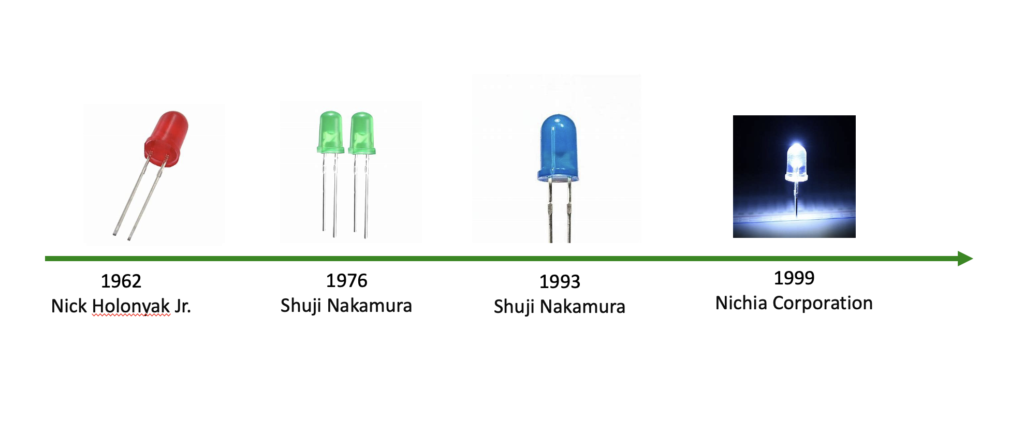
The Wavelength And Color Of LEDs
The wavelength and color of LEDs depend on the semiconductor material used and its bandgap. Different materials and structures can achieve emission at different wavelengths, ranging from ultraviolet to infrared, as well as various colors of visible light.

How Can Different Colors Be Achieved?
The emission wavelength of an LED is mainly determined by the bandgap of the semiconductor material used. A larger bandgap corresponds to lower energy photons, emitting longer wavelength light such as red or near-infrared, while a smaller bandgap corresponds to higher energy photons, emitting shorter wavelength light such as blue or ultraviolet.
Red LED: Commonly used material is indium gallium phosphide (InGaP), capable of emitting red light with a wavelength of approximately 620 nm – 750 nm.
Green LED: Materials used include aluminum gallium nitride (AlGaN), emitting green light with a wavelength of approximately 500 nm – 570 nm.
Blue LED: Typically uses gallium nitride (GaN) and similar materials, with a smaller bandgap capable of emitting blue light with a wavelength of approximately 400 nm – 500 nm.
Shorter wavelengths correspond to higher energy, making the production process more complex. This is why blue light took 66 years longer to research and become commercially available compared to red light.
What Is Infrared Light?
Infrared radiation, also known as infrared light, is an electromagnetic wave that falls between visible light and microwaves, with a wavelength range of 0.76 to 1000 micrometers. It is a form of invisible light with frequencies lower than those of red light.
Infrared light is a type of thermal radiation, and a portion of thermal energy emitted by objects falls within the infrared spectrum. When objects have higher temperatures, they emit more infrared radiation. Therefore, infrared light is commonly used for measuring object temperatures.
Infrared light has good penetration ability in air and can pass through a certain thickness of atmosphere, water vapor, and some transparent materials. However, it is absorbed or reflected by opaque objects.
What Are The Applications Of Infrared Light?
As long as an object is above absolute zero (-273 degrees Celsius), it emits infrared radiation. Therefore, everything on Earth emits infrared radiation, but how can infrared light help us?
We can use devices to emit infrared light to transmit information, such as in household appliances like TV remotes, air conditioners, and stereos. These remotes send specific-frequency infrared signals to control the functions of devices.
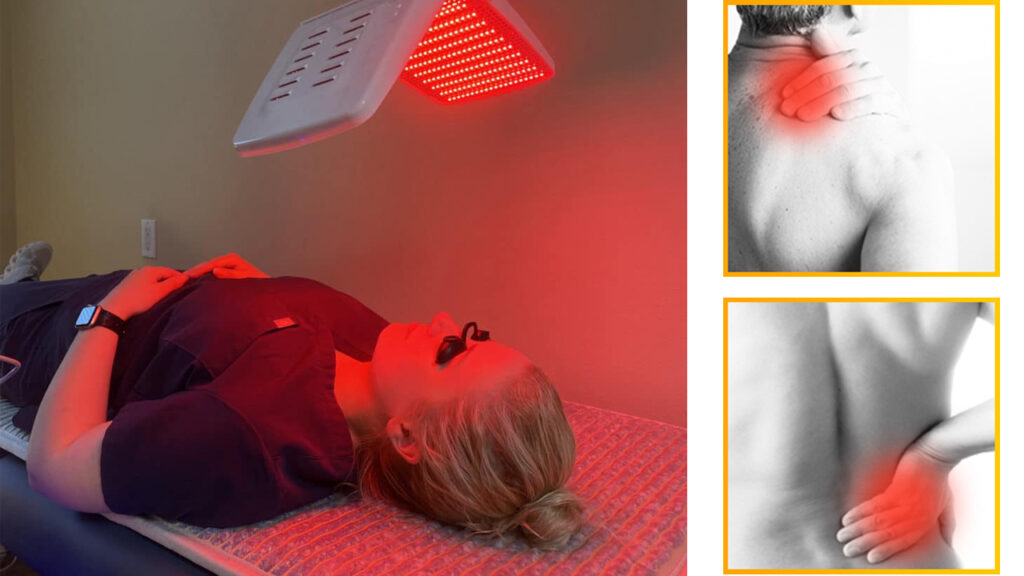
Additionally, infrared light can be emitted in medical devices for treating joint pain and promoting blood circulation. This is possible because infrared light has strong penetration capabilities, reaching deep into tissues and joints below the skin surface. This ability allows infrared light to directly affect surrounding tissues like muscles, blood vessels, and nerves, inducing a local heating effect. When infrared light is absorbed by the skin, it converts to heat energy, raising the temperature of the local tissue. This thermal effect can help relieve pain, reduce muscle tension, and improve blood circulation.
Moreover, capturing infrared radiation emitted by objects on Earth allows us to determine their shapes. Infrared cameras can detect and capture the infrared spectrum, commonly used in night vision devices, security cameras, and military applications.
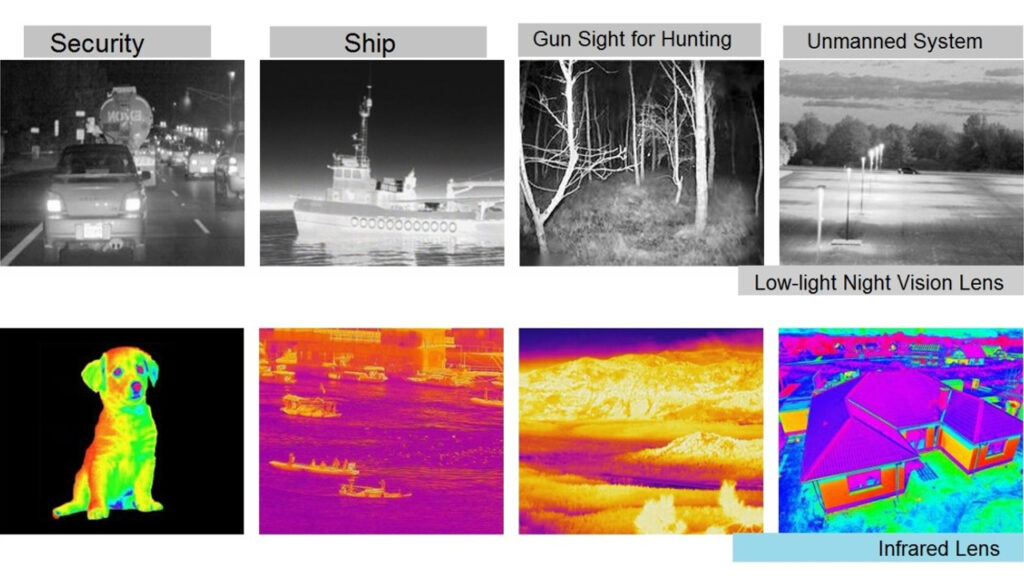
For example, infrared thermography converts the heat distribution and temperature of objects into visible images, which is widely used in architecture, medicine, firefighting, and other fields.
Finally, infrared sensors can detect the presence, motion, or distance of objects, commonly used in automatic doors, faucets, smart lighting, and other automated systems.
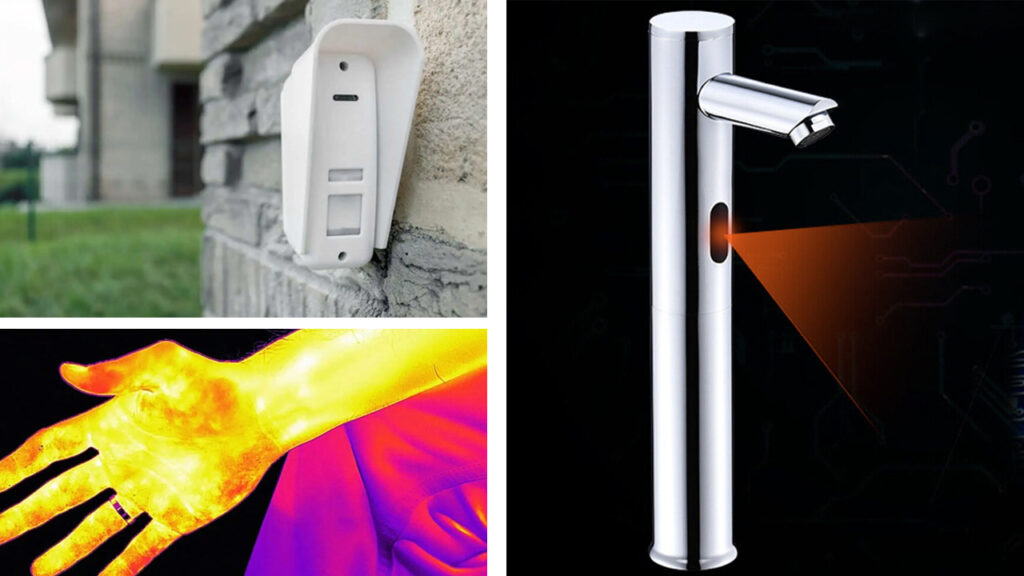
What Is Red Light?
Red light is a type of light within the visible spectrum, with a specific wavelength range typically between approximately 620 nm to 750 nm. Red light is one of the colors visible to humans, characterized by longer wavelengths and lower energy.
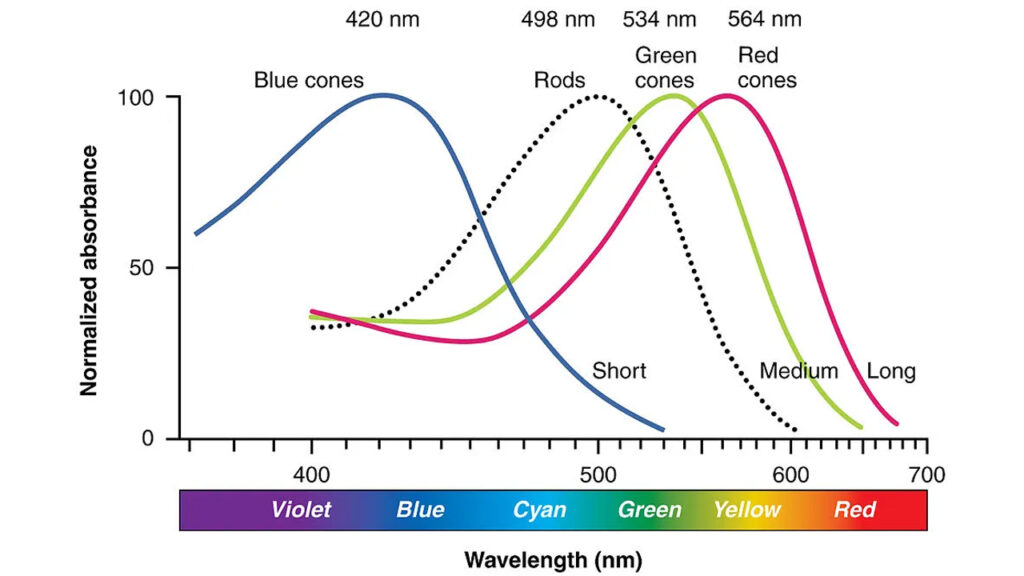
What Are The Applications Of Red Light?
Red light is widely used for nighttime illumination or in low-light environments, such as night lights, navigation lights, and instrument lights. This is because red light experiences less atmospheric scattering, allowing it to penetrate longer distances. Therefore, red light is more suitable for long-distance illumination during nighttime or low-light conditions compared to other colors.
Red light is also used in certain medical and beauty therapies, such as photodynamic therapy, for treating skin issues, promoting wound healing, and alleviating pain. This is due to its ability to penetrate the skin’s surface, stimulating cells to produce more ATP (adenosine triphosphate), which is the primary energy source for cells, aiding in accelerating cellular metabolism and tissue repair.
Red light is also used in certain medical and beauty therapies, such as photodynamic therapy, for treating skin issues, promoting wound healing, and alleviating pain. This is due to its ability to penetrate the skin’s surface, stimulating cells to produce more ATP (adenosine triphosphate), which is the primary energy source for cells, aiding in accelerating cellular metabolism and tissue repair.
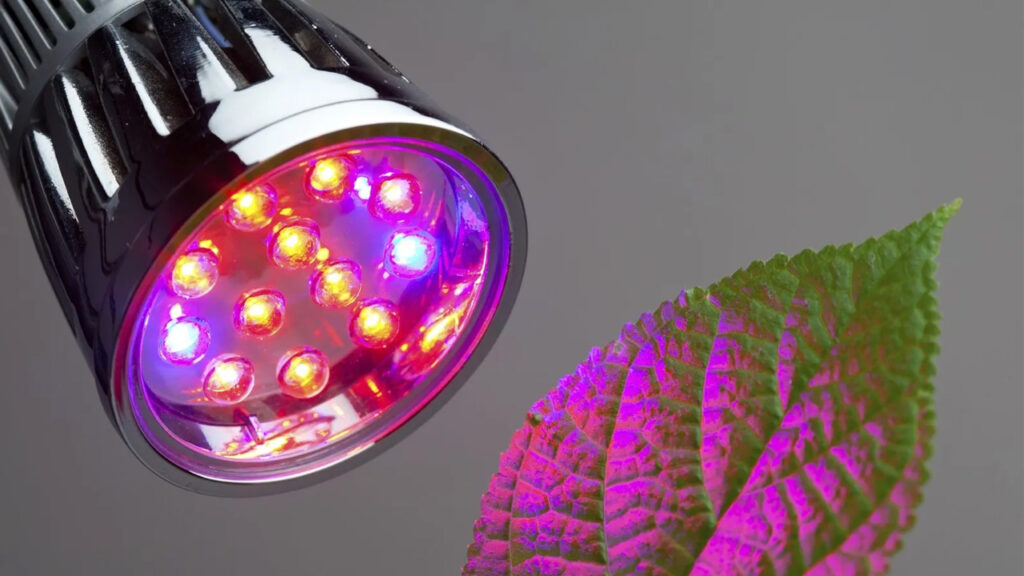
What Is Green Light?
Green light is a type of light within the visible spectrum, with a specific wavelength range typically between approximately 495 nm to 570 nm. Green light is one of the colors visible to humans and is commonly considered a middle color between blue and yellow light.
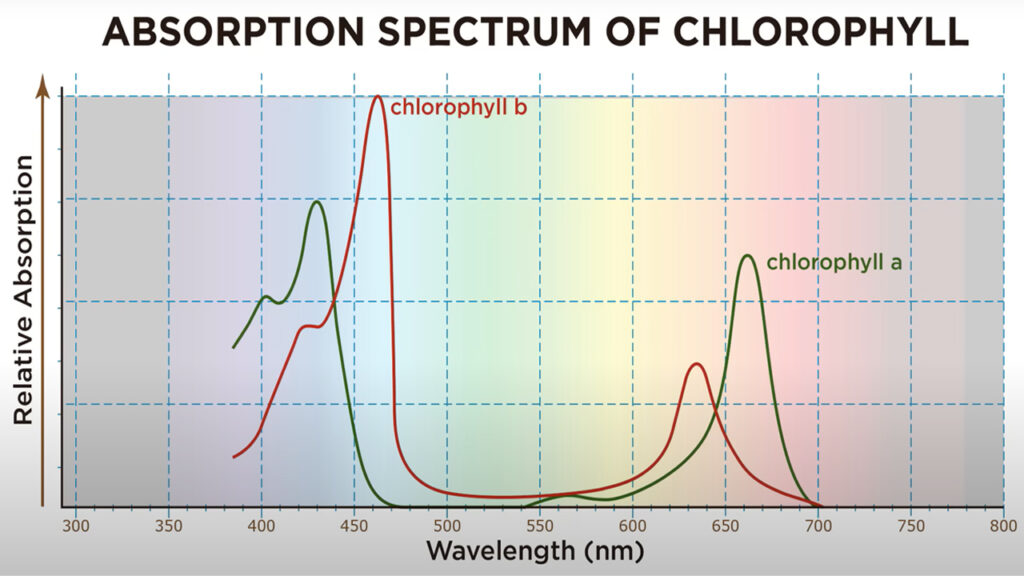
What Are The Applications Of Green Light?
Green light is used as a color for illumination, such as in green light bulbs or green LED lights. Green lighting is commonly seen in stage performances, nighttime landscapes, and architectural lighting.

Green is also used in traffic signal lights because it is one of the brighter and more noticeable colors to the human eye, with good contrast and visibility. In traffic signals, green is easier to notice and identify under various environmental conditions, helping drivers and pedestrians accurately understand the signal meanings.

Green light lasers are widely used in the medical field for various applications including ophthalmic surgery (such as laser corneal refractive surgery), skin treatments (such as treating vascular lesions, acne, pigmentation), and urological disease treatments. Why isn’t red light used in medical applications? This is because red light has a longer wavelength and weaker penetration ability, making it more likely to be absorbed and scattered by the surface tissues of the eye, resulting in excessive heat and potential damage on the eye surface. This increases the risks and complications of eye surgeries.

What Is Blue Light?
Blue light refers to a portion of light within the visible spectrum characterized by shorter wavelengths and higher frequencies. In the spectrum, light with wavelengths approximately between 450 nm to 495 nm is considered blue light. The color of blue light appears cyan or blue.
Blue light refers to a portion of light within the visible spectrum characterized by shorter wavelengths and higher frequencies. In the spectrum, light with wavelengths approximately between 450 nm to 495 nm is considered blue light. The color of blue light appears cyan or blue.
We can see blue light because it activates the blue-sensitive cones in our eyes. During the day, exposure to blue light with the rising sun reduces melatonin secretion in the body, which helps increase alertness, speed up reaction times, and enhance mood, aiding humans in their daily activities. As the sun sets in the evening and exposure to blue light decreases, it contributes to sleep and relaxation.
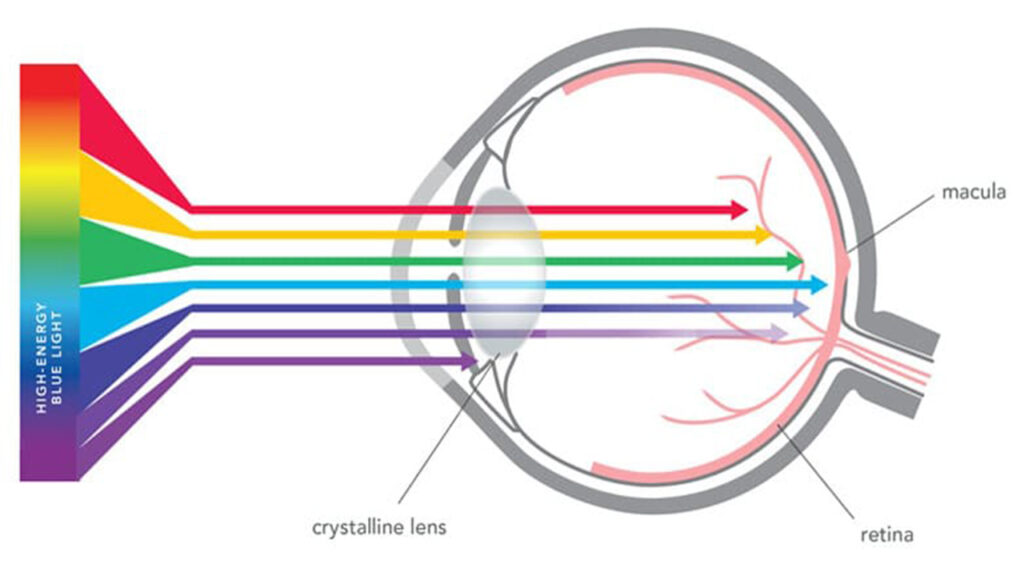
What Are The Applications Of Blue Light?
What Are The Applications Of Blue Light?
Blue light is used to treat neonatal jaundice by reducing the levels of bilirubin in the body. The principle behind this is that blue light can activate bilirubin molecules in the blood, causing them to undergo isomerization or decomposition, transforming into more water-soluble metabolites that are easier for newborns to excrete. This promotes the metabolism and elimination of bilirubin.
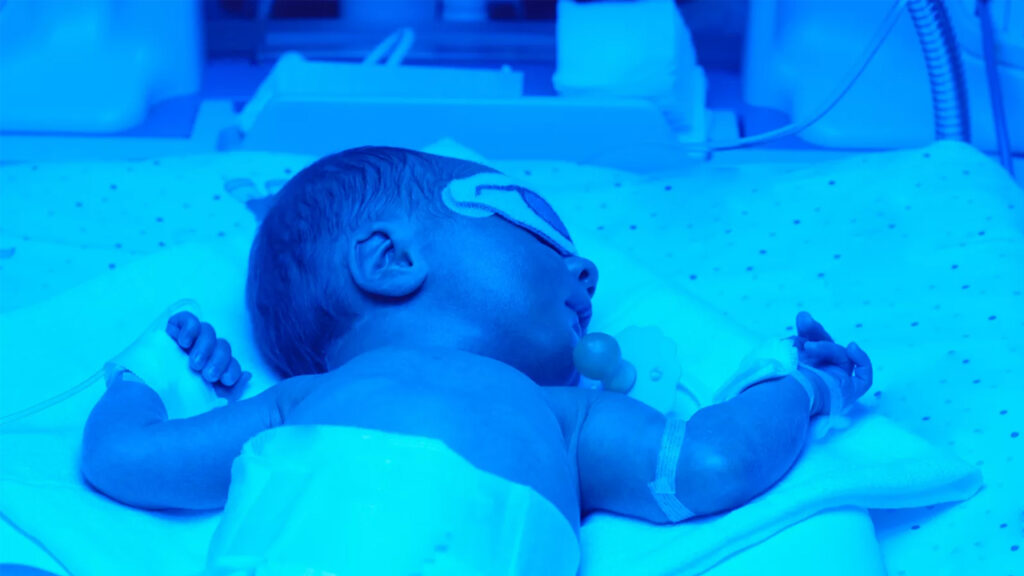
Blue light LEDs can be used to produce white light through the use of fluorescent materials or phosphors. The principle is that phosphors, when excited by blue light, emit longer-wavelength light including red and green light, which mix to form white light. White light is then used for household lighting, commercial lighting, automotive lighting, etc.
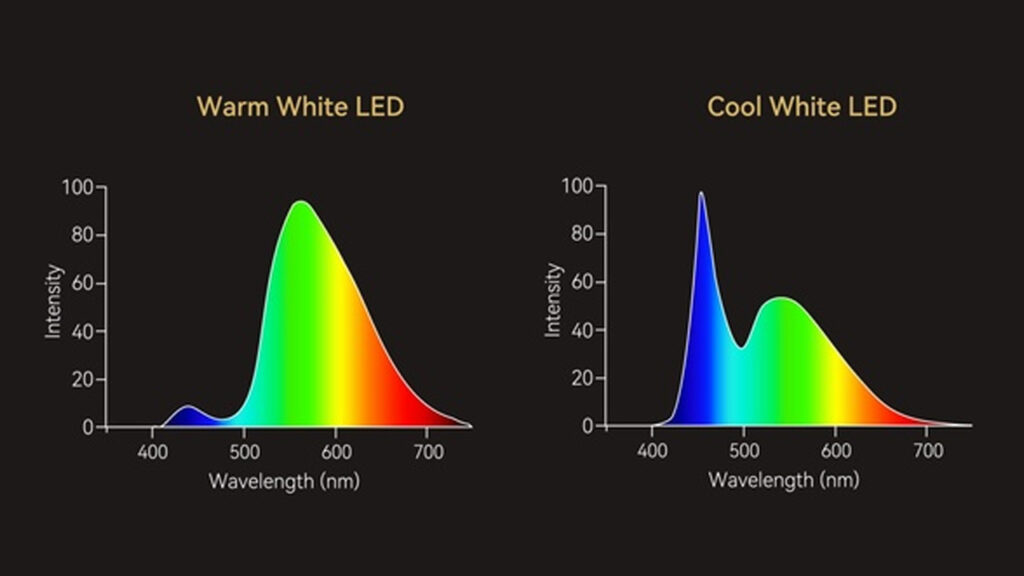
Blue light lasers are used as light sources and lasers in optical fiber communication systems. The short wavelength and high frequency of blue light give it a higher information transmission rate and bandwidth in optical communications.
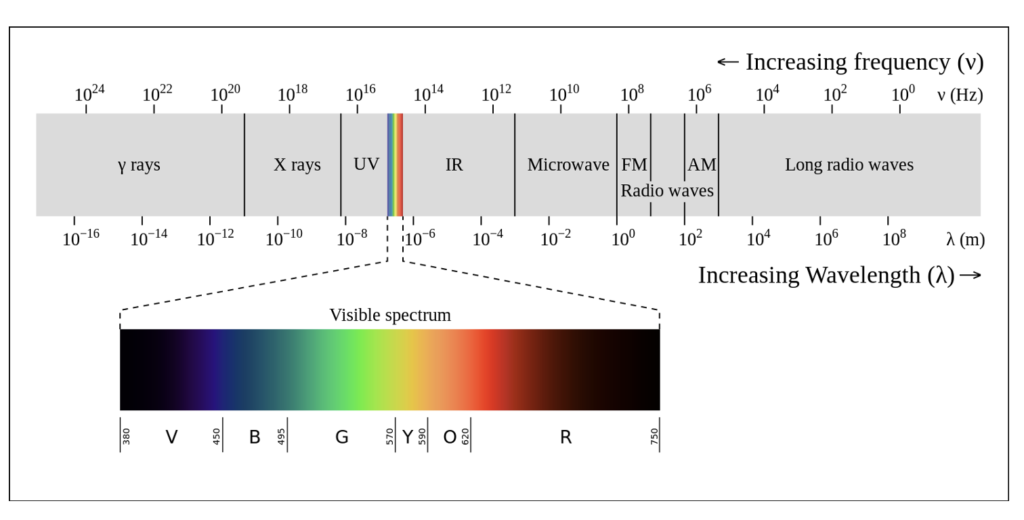
Blue light combined with bleaching agents is used for teeth whitening. The principle behind this is that commonly used bleaching agents for teeth whitening contain hydrogen peroxide (hydrogen peroxide) or its derivatives, such as carbamide peroxide. Blue light can penetrate the surface of the teeth and interact with the chemicals in the bleaching agent. When these chemicals are excited by blue light, they produce more free radicals or reactive oxygen species, which are highly oxidative and can more effectively oxidize the pigments on the surface of the teeth.
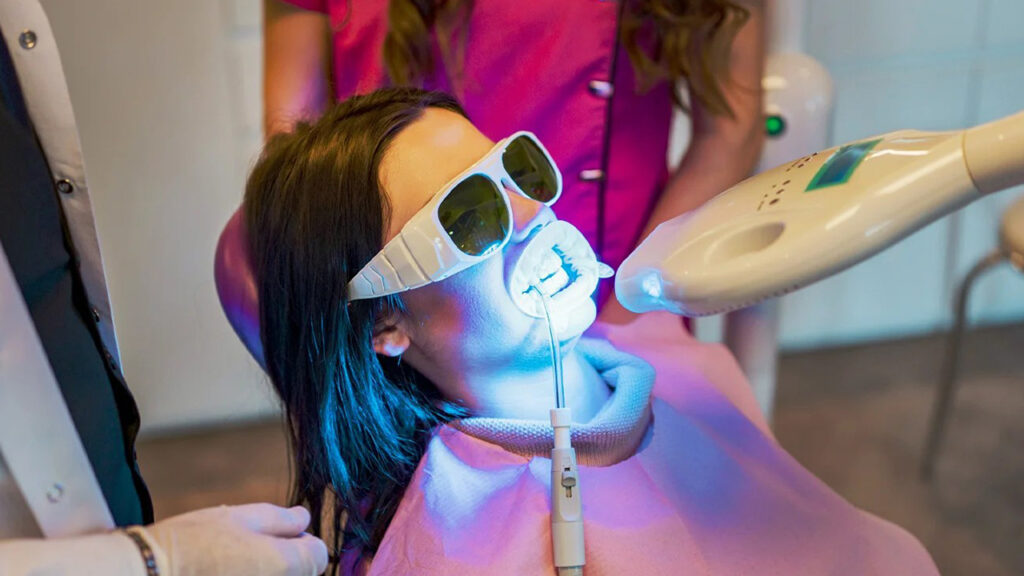
The chemical reaction between blue light and photosensitizers can be used to treat skin issues such as acne and psoriasis. This is because photosensitizers are special drugs that can absorb light energy of specific wavelengths and undergo chemical reactions. Therefore, when photosensitizers are exposed to blue light, they undergo one or more reactions, such as releasing oxygen free radicals or other active molecules, leading to bacterial death or inhibition of growth, thereby reducing acne symptoms and inflammation.
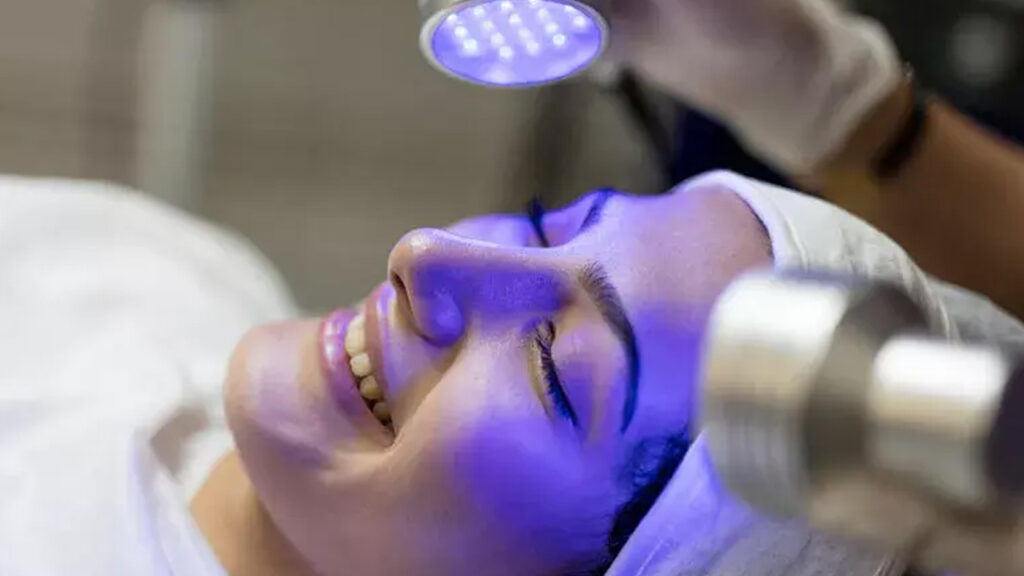
Blue light is a critical wavelength in photosynthesis, benefiting underwater organisms’ growth and plant photosynthesis. Therefore, it is widely used in aquariums and plant growth lights. Blue light is effectively absorbed by chlorophyll (one of the pigments in plant photosynthesis), promoting photosynthesis to provide plants with the energy and nutrients they need.
What Is Ultraviolet Light?
Ultraviolet (UV) light is located beyond the violet end of the electromagnetic spectrum, hence its name “ultraviolet.” The range of ultraviolet light spans from 10 to 400 nm. Ultraviolet light is further categorized into short-wave ultraviolet (UVC, 200-275 nm), medium-wave ultraviolet (UVB, 275-320 nm), and long-wave ultraviolet (UVA, 320-400 nm). Ultraviolet light with wavelengths less than 200 nm is termed vacuum ultraviolet.
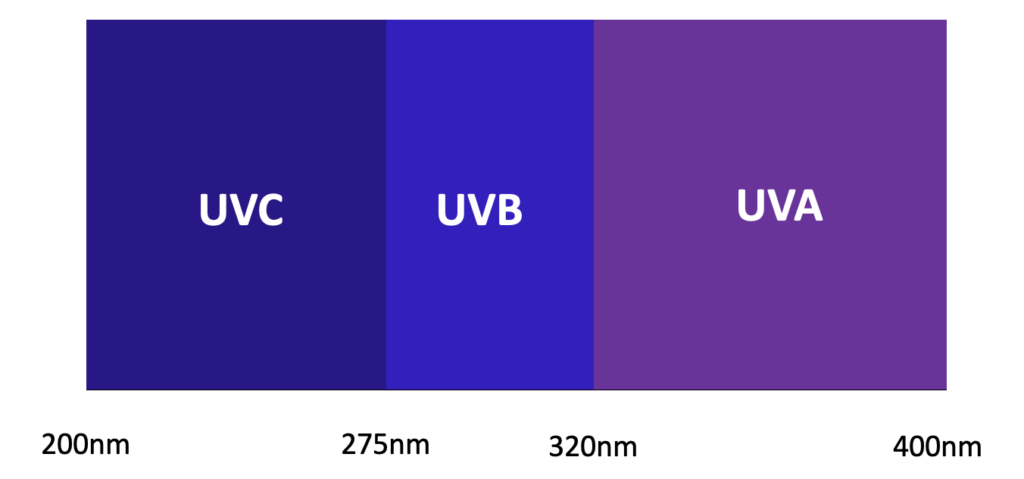
UVA has the strongest penetrating ability and can reach the Earth’s atmosphere directly. UVB has moderate penetrating ability and only about 2% can reach the Earth’s surface after being partially blocked by the atmosphere. UVC has the weakest penetrating ability and cannot penetrate the Earth’s atmosphere, let alone reach the Earth’s surface.
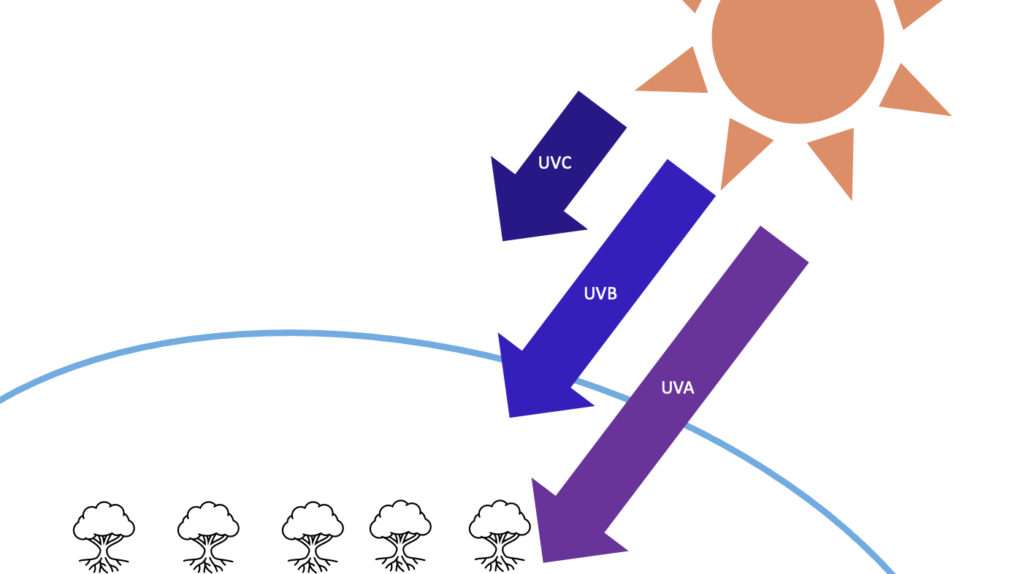
If we analyze it this way, you might think that UVC has the weakest capability. However, this is not the case. Despite its weak penetrating ability, each photon of UVC carries a substantial amount of energy. We can utilize this characteristic to kill bacteria and viruses, hence UVC is also known as short-wave germicidal ultraviolet.
Through prolonged exploration, scientists have discovered that ultraviolet light with a wavelength of 253.7 nm in the UVC range exhibits the best germicidal effect, achieving an effective sterilization rate of 99.99%. The main principle is that ultraviolet light can induce changes in the genetic material (DNA and RNA) of microorganisms, disrupting their structure and rendering them unable to reproduce. In the presence of ultraviolet light, all microorganisms face certain destruction.
What Are The Applications Of Ultraviolet Light?
Ultraviolet light is used in the production of electronic chips. For example, EUV lithography machines use extreme ultraviolet (EUV) light with a wavelength of 10-14 nm. Due to its extremely short wavelength and high resolution, it can be used in lithography machines to produce CPUs and various electronic chips with very fine processes.
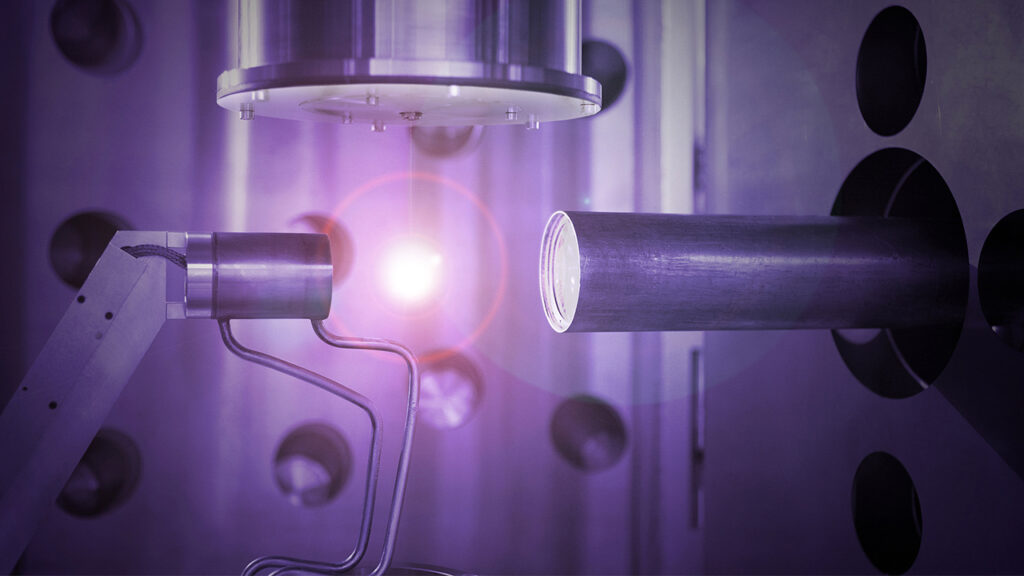
UV coatings cure under ultraviolet light photon exposure (UV lamps), typically in just around 1 second or less, enabling rapid continuous operation and significantly improving production efficiency.
Ultraviolet light cleaning technology utilizes the photolytic oxidation of organic compounds to remove organic substances adhering to material surfaces. After ultraviolet cleaning, the material surface can achieve “atomic cleanliness.”
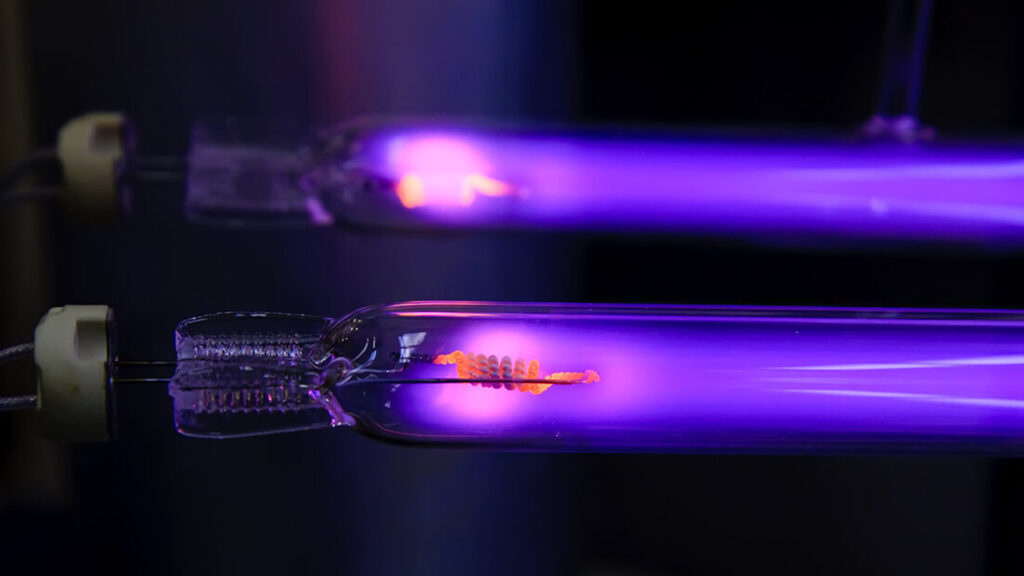
Ultraviolet lamps are tools that use ultraviolet light to kill insects. The principle behind insect eradication with ultraviolet lamps is through the radiation emitted by the ultraviolet lamp, which kills insects. Ultraviolet light has strong penetration and radiation capabilities at different wavelengths. For small insects such as aphids and fleas, direct exposure to ultraviolet light can kill them by damaging their cell membranes and DNA structure, thereby achieving insecticidal effects.
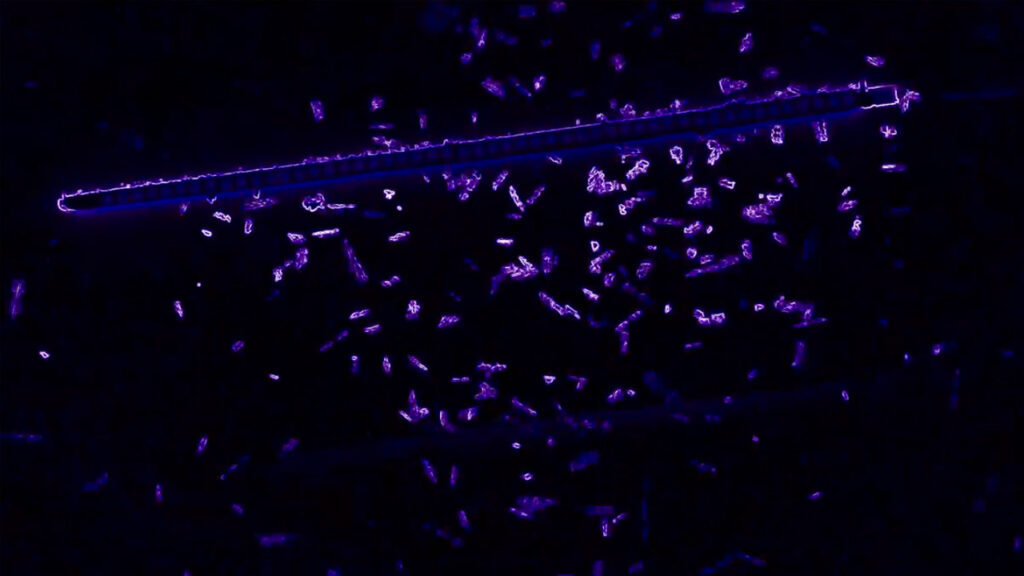
In addition, ultraviolet light with a wavelength of 365 nm plays an important role in some environmental monitoring and quality control fields. For example, ultraviolet light can be used to detect and monitor pollutants and harmful substances in the air. By irradiating gas samples with ultraviolet light at a wavelength of 365 nm, certain pollutants or harmful substances emit specific spectral signals. Researchers can use these spectral signals to quantify and detect the presence and concentration of these substances.
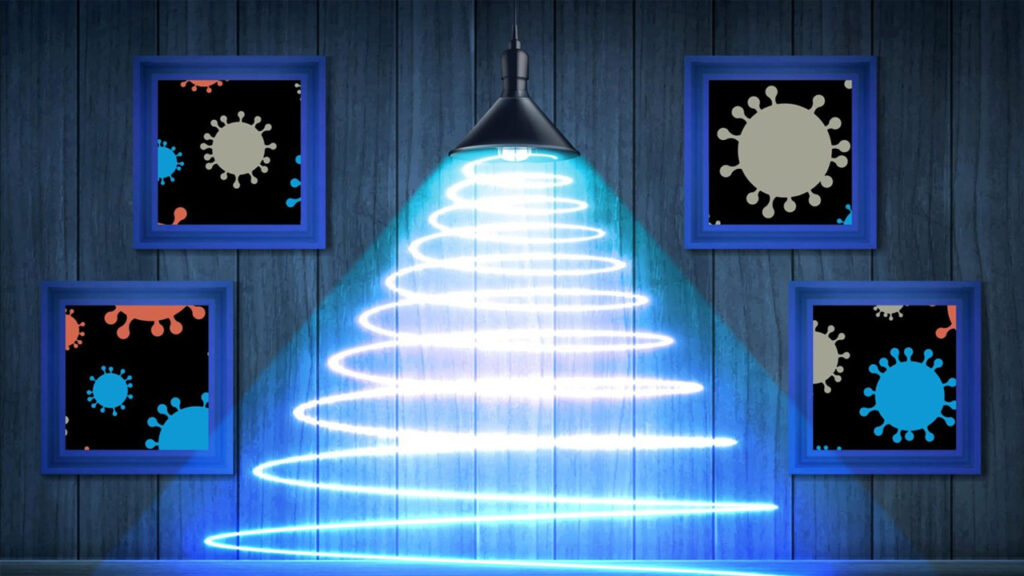
Future Trends in LED Technology?
With continuous innovation and advancements in technology, LEDs will continue to play a crucial role in various fields, driving the development and application of optoelectronic technology.
Higher Efficiency LEDs
Currently, the optical-electrical conversion efficiency of red and green LEDs on the market typically ranges from 20% to 30%, while blue LEDs usually achieve efficiency between 30% to 40%. The remaining unconverted energy is dissipated as heat.
In the future, improving the optical-electrical conversion efficiency of LEDs will lead to higher energy utilization efficiency, reduce the demand for fossil fuels, lower environmental impact, and promote sustainable development and a low-carbon economy.
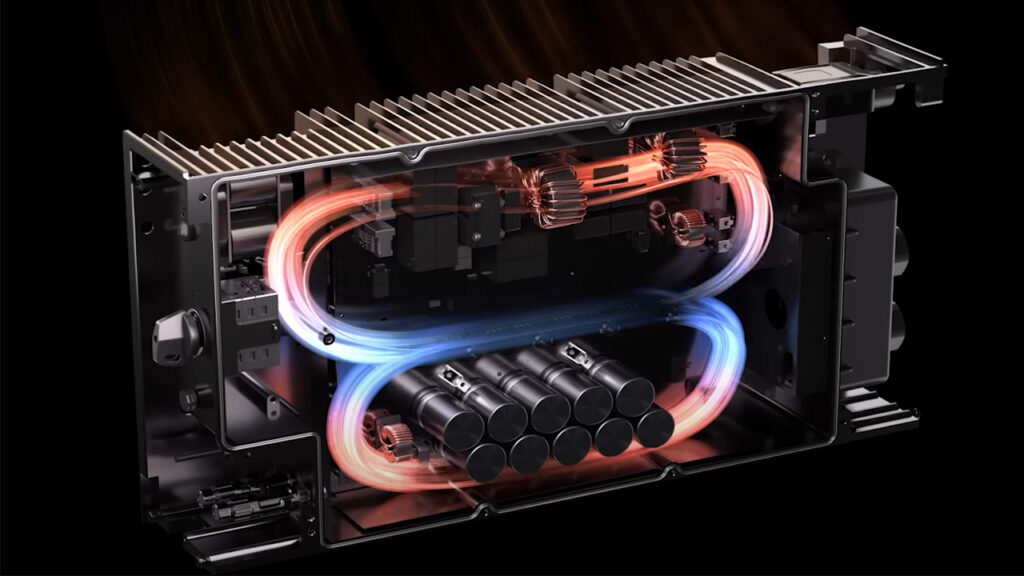
MicroLEDs
Micro LED refers to the technology where LED light-emitting units with sizes ranging from 1 to 60 micrometers form a display array. These LEDs are about 1/10th the size of a human hair and offer advantages such as no need for backlighting, high optical-electrical conversion efficiency, and response times in the nanosecond range. This technology involves thinning, miniaturizing, and arraying LEDs, reducing their volume to just 1% of mainstream LEDs and achieving pixel pitch reductions from millimeters to micrometers.
With the gradual expansion of the AR/VR market and increasing demands for displays, old LCD and OLED displays are struggling to keep up with market requirements. Therefore, Micro-LED applications are expected to be extensive in the future, spanning wearable devices, large indoor screens, head-up displays (HUD), taillights, wireless optical communication (Li-Fi), AR/VR, projectors, and more.
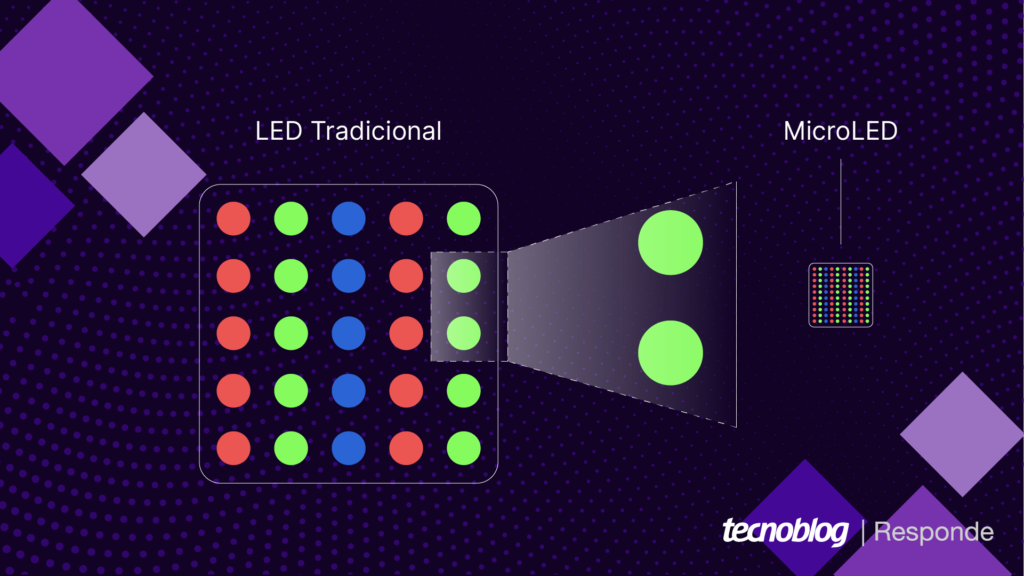
Purple LEDs
Current purple LEDs on the market use phosphors, resulting in lower emission efficiency compared to directly using blue or other colored LEDs. Future improvements in material design could enable UV LEDs, with their short wavelength and high frequency characteristics, to be used in high-speed, high-bandwidth optical communication systems.
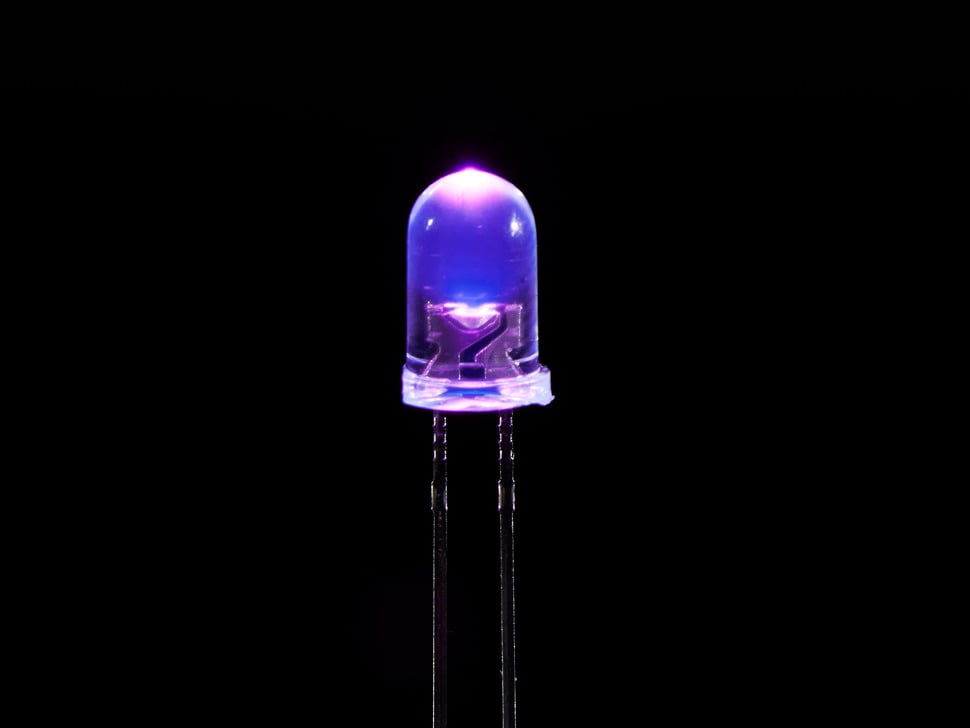
Transparent LEDs
Current LED materials restrict transparency. Transparent LEDs will have vast future applications, such as smart displays and transparent screen technology for manufacturing transparent TVs, monitors, and information display devices. They can also be applied in smart glasses and augmented reality (AR) devices to overlay virtual information onto the real world, achieving more realistic and immersive AR experiences.
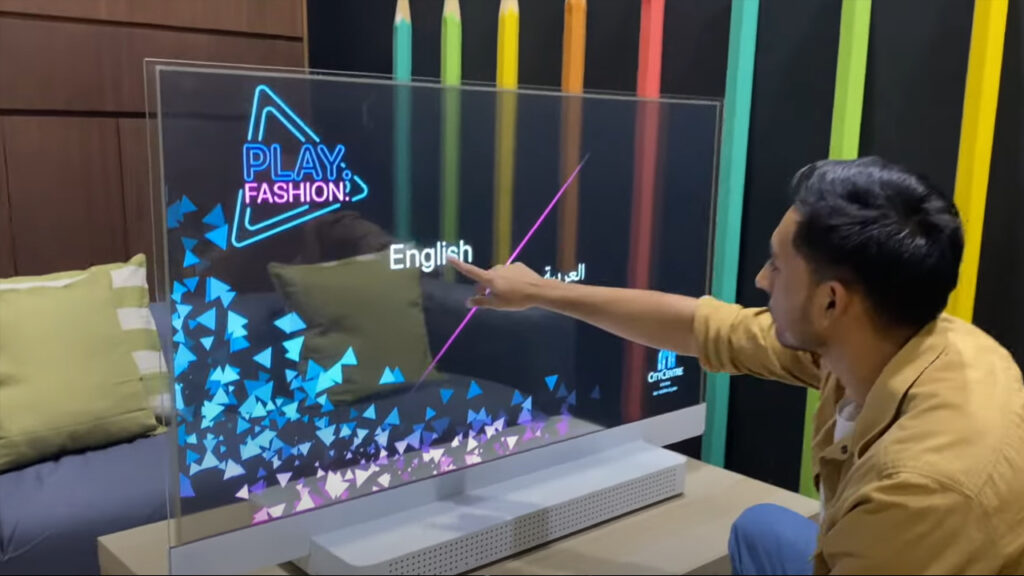
Conclusion
In summary, LED technology demonstrates tremendous potential and broad application prospects through continuous innovation and progress. With improvements in optical-electrical conversion efficiency and the development of new technologies like MicroLED and transparent LED, LEDs will continue to play a crucial role in lighting, displays, communications, biomedicine, and other fields, driving technological advancement and societal development.
At Fligreen, as a professional solar lighting manufacturer, we use crystalline 150LM/W LEDs, committed to emitting the brightest light with the lowest energy consumption. If you are interested in any solar lighting products, please feel free to contact us.
Related Blogs
February 12, 2025
November 10, 2024
Share Via:
Get in Touch with Us Now!
Got questions or feedback? We’d love to hear from you! Just fill out the form below, and our friendly team will respond ASAP.
